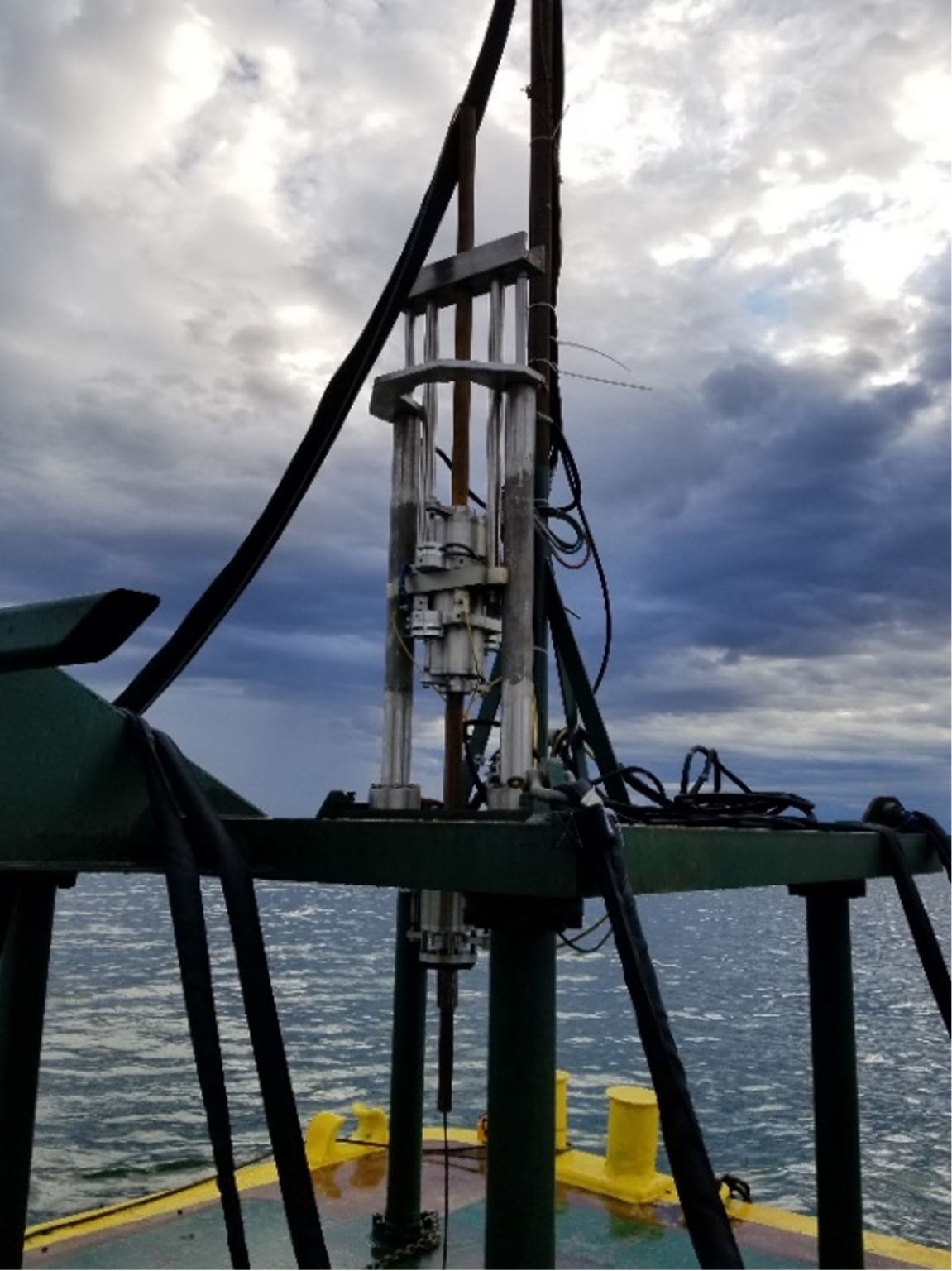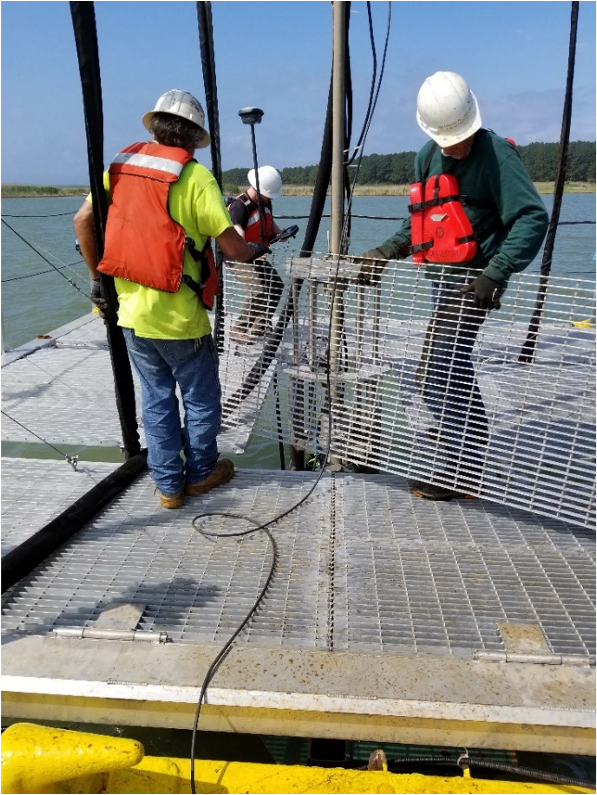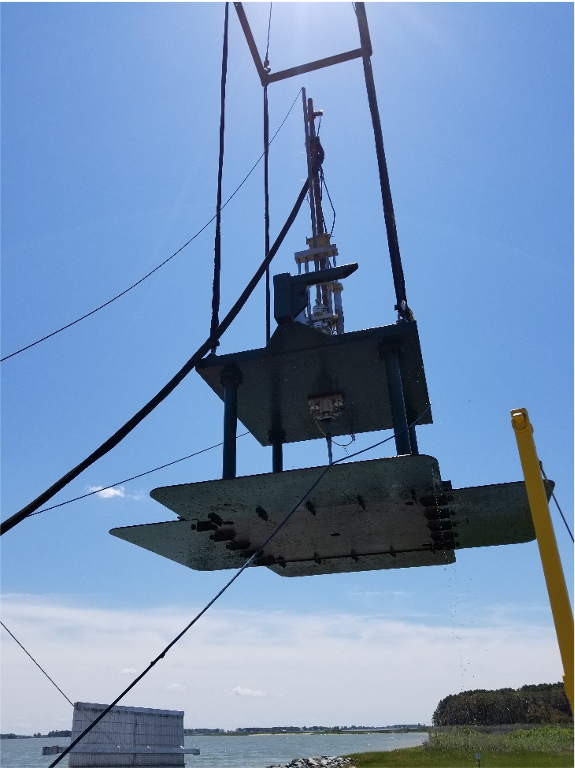Seafloor Direct Push System
We have developed a seafloor direct push system enabling us to perform either cone penetrometer or dilatometer with true-interval seismic tests from the mudline of a river or bay. The crane operator on the barge lowers this 15-ton thrust capacity equipment to the mudline with a spreader frame, which keeps the lifting slings vertical, as we add push rods and depth reference casing. Our stable platform eliminates the parasitic effects of waves and tides as well as the lack of lateral support for the push rods in the water column. The base for the seafloor resembles a giant octagon having outside dimensions of 14.0 feet and applies a low bearing pressure of 150 psf or 7.18 kPa. Essentially, after the seafloor system rests at the mudline, we push dilatometer or cone penetrometer probes at the constant ASTM rate of 2 cm/second, just like we do for land soundings.
Often, rivers have an extremely soft mud layer that the geotechnical design engineer needs to evaluate its strength and deformation properties. Push rods will often sink into these soft muds under their weight [from our experience to depths up to 40 feet (12 meters)]. Our seafloor system simply lowers, instead of pushes, either the CPTU or DMT probe into these soft muds at the controlled rate of 2 cm/second, as we accurately measure their properties.
We use a 200-pound (90 kgf) pendulum hammer with a moment arm of 4 feet (1.2 meters) to generate high energy shear waves with horizontal particle motion and vertical direction of propagation that we accurately measure with our true interval seismic DMT probe. A hydraulic piston raises the hammer until it trip-releases sending the high energy seismic wave into the soil. Our “box lid” seismic plate embeds into the river mudline soils and creates excellent coupling to transfer the shear waves through the soil to our seismic DMT geophones. To generate additional energy, the hydraulic piston can also pull against elastic bands.
After the crane operator lowers the seafloor direct push system through the cantilevered opening on the side of the barge, winches lower hinged aluminum grated decking over the seafloor providing safe work space so that we can either add or remove the push rods.
Cameras mounted on the push pistons let us watch the rods being pushed or removed. Load cells mounted in the push clamp measure the thrust.





